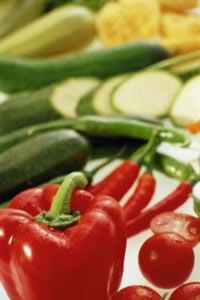 “Deeply-colored vegetables are rich in nutrients.Image Source
“Deeply-colored vegetables are rich in nutrients.Image Source
A. A study by the U.S. Department of Agriculture (USDA) found that the potato was America’s most widely eaten vegetable. Iceberg lettuce came in second.
Experts recommend eating at least 5 servings of vegetables a day, but according to the American Institute for Cancer Research, deeply colored vegetables — whether green, yellow, orange, or red — and dark leafy greens make up only 0.2 servings of the 3.3 servings Americans consume daily.
It is these brightly colored, nutrient-dense foods that may offer the most protective health benefits against cancer and other diseases, as well as helping people with diabetes control their calorie intake and blood sugar.
According to experts, the more brightly colored the vegetable, the more protective the health benefits, thanks to a rich assortment of plant compounds called phytochemicals.
Phytochemicals help the body deal with substances called free radicals. Free radicals, formed from a natural process called oxidation, can damage body cells and tissues as well as DNA. Damage caused by oxidation may lead to the onset of health problems such as cancer, heart disease, cataracts, and arthritis.
Fortunately, antioxidant vitamins and many phytochemicals help to "neutralize" free radicals before they can do damage and may even help undo some of the damage already done to cells. Antioxidants such as beta-carotene and vitamins E and C are readily available in colorful vegetables.
Of course, vegetables aren’t merely side dishes — incorporate them into meals as spreads, dips, and sauces.
Vegetables rich in fiber, such as carrots and sweet potatoes, make a thick purée that needs to be thinned with a little low-sodium broth, nonfat milk, or nonfat half and half. A sauce may need more liquid, while a dip for baked chips or raw vegetables or a sandwich spread needs very little.
Vegetable purées can also be used as pizza and pasta toppers, or as bases for quick soups. Serve vegetable purées as dips with sticks of raw vegetables or use as a spread on crackers, bread, or tortillas.
Lots More Information
Related HowStuffWorks Articles
- Vegetables
- Vegetable Gardens
- Vegetable Recipes
- Staking Vegetables







































